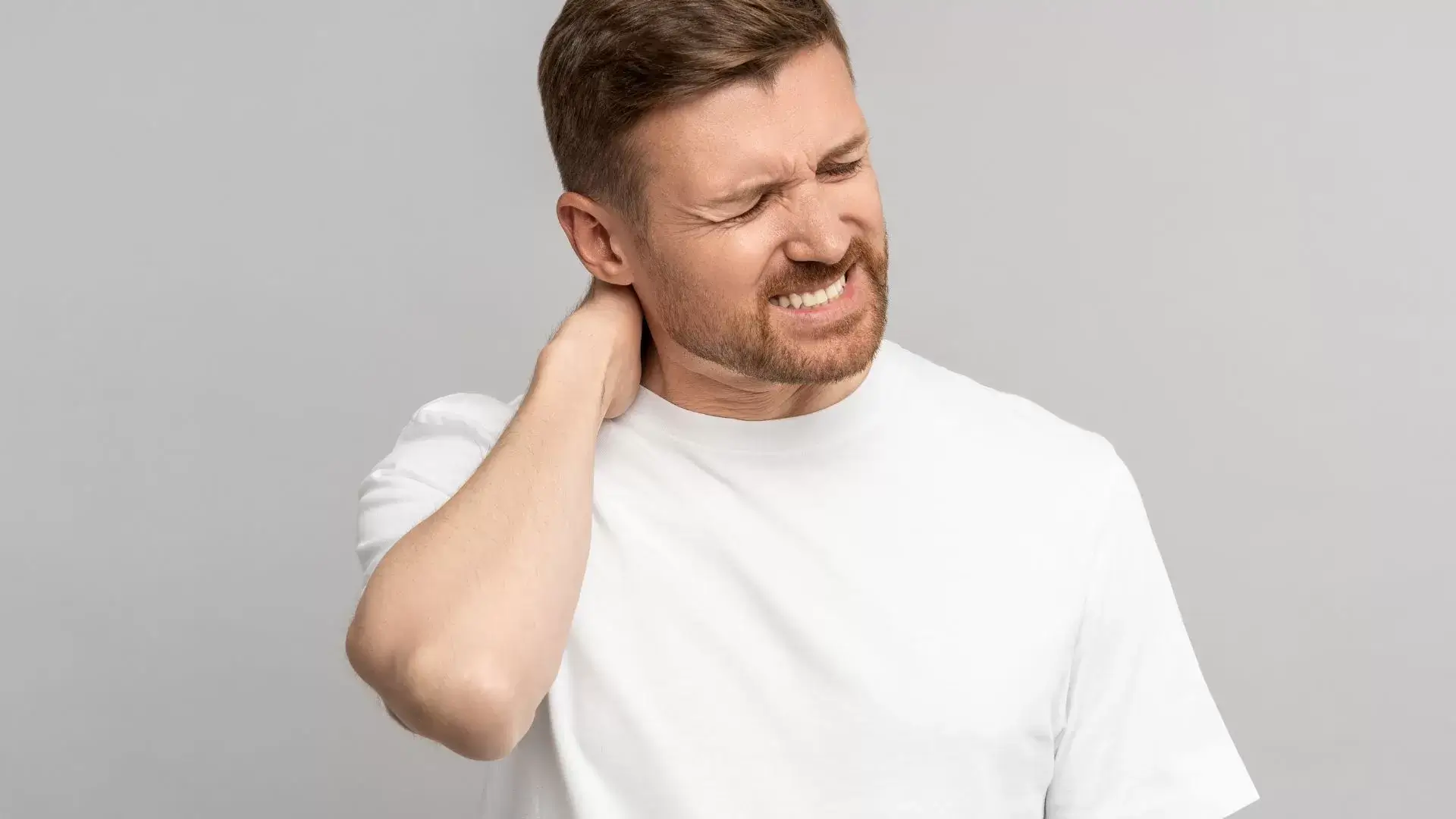If we’re seeking a chiropractor for torticollis in Mississauga, we’ll find specialized care committed to restoring neck mobility and relieving muscle tension. Torticollis, or ‘twisted neck,’ can greatly impact our daily activities, but chiropractic adjustments focus on aligning the cervical spine and addressing underlying muscle tightness. Our Top Physiotherapy & Chiropractic Clinic in Mississauga can expect tailored treatment plans that combine manual therapy, stretching exercises, and lifestyle modifications. With early intervention, we can improve both function and quality of life. There’s much more to discover about how these treatments can support our journey towards wellness and comfort.

At Mississauga Physio Chiro Clinic, we offer extensive physiotherapy and chiropractic services tailored to address the unique needs of individuals suffering from torticollis. We recognize that neck pain and muscle tightness can greatly impact daily life, and our dedicated team is here to help. Our approach focuses on identifying the root causes of cervical spine dysfunction, allowing us to create personalized treatment plans.
We utilize a combination of manual therapy, therapeutic exercises, and postural correction techniques to alleviate discomfort and restore mobility. Our stretching exercises are designed to enhance flexibility and reduce tension in the neck muscles. Additionally, we incorporate heat therapy to promote relaxation and improve blood circulation, which can further aid in recovery.
For those dealing with pediatric torticollis, our specialized treatment protocols guarantee that children receive care suited to their developmental needs. We’re committed to providing compassionate care, empowering our patients with the knowledge and tools needed for their recovery journey. Together, we can navigate the path to improved neck health, enabling you or your child to regain comfort and freedom of movement. Let’s work together to achieve your wellness goals.
Torticollis, often referred to as ‘twisted neck,’ can greatly disrupt neck health and mobility, leading to discomfort and limitations in daily activities. This condition often manifests through neck stiffness and limited neck movement, making everyday tasks increasingly challenging. In many cases, it results from muscle contracture that causes abnormal head posture, where the head tilts or rotates involuntarily.
For those experiencing neck muscle spasms, torticollis can create a persistent cycle of pain and discomfort, substantially impacting quality of life. In the case of neurological torticollis, underlying neurological factors contribute to this muscle dysfunction, sometimes leading to facial asymmetry.
Understanding these symptoms is essential for effective treatment. Chiropractic care offers a holistic approach to managing torticollis. By addressing the misalignments in the cervical spine and working on muscle balance, we can help improve mobility, reduce pain, and restore normal head posture. Through targeted chiropractic techniques, we can alleviate the discomfort associated with this condition and support the overall health of our neck. If you’re struggling with torticollis, seeking chiropractic care may be a valuable step toward regaining your neck’s mobility and comfort.
How can we better understand the various types of torticollis and their underlying causes to effectively address this complex condition? Torticollis, often referred to as wry neck, can be classified into congenital and acquired types. Congenital torticollis usually arises due to birth trauma, where tightness in the neck muscles leads to a cervical muscle imbalance. On the other hand, acquired torticollis can develop later in life, often stemming from factors like spinal misalignment, nerve compression, or even stress-induced muscle tension.
Within acquired torticollis, we find muscular torticollis, stemming from muscle strain, and postural torticollis, often linked to poor posture and repetitive movements. Each type has distinct characteristics, yet they share common underlying causes that may contribute to neck discomfort and restricted movement. By recognizing these causes, we can tailor our approach to treatment, address the root issues, and promote healing.
Understanding these nuances not only helps us identify the specific type of torticollis but also empowers us to choose the most effective interventions, ensuring a holistic approach to recovery.
Recognizing the symptoms of torticollis is vital, as timely intervention can greatly improve our overall well-being and comfort. Torticollis can manifest in various forms, including spasmodic torticollis and acute torticollis. We may notice a distinct head tilt or an asymmetric neck position, often due to involuntary muscle contractions affecting the sternocleidomastoid muscle.
In cases of idiopathic cervical dystonia, we might experience unpredictable muscle spasms that lead to muscle weakness and discomfort. It’s important to pay attention to trigger points that can exacerbate our symptoms, especially if we have chronic torticollis. This condition can cause not only physical discomfort but also emotional distress as it interferes with daily activities.
If we experience persistent neck stiffness, sudden pain, or a noticeable tilt in our head, it’s essential to seek help promptly. Early intervention can prevent the progression of symptoms and enhance our quality of life. By recognizing these signs, we can take proactive steps toward managing our condition, ensuring that we receive the appropriate care and support needed to regain our comfort and mobility.

Exploring chiropractic care can offer us significant relief from the discomfort associated with torticollis, helping to restore mobility and improve our overall quality of life. This holistic approach addresses issues like muscle tightness and cervical misalignment, which are common in individuals suffering from this condition. By working with a chiropractor, we can benefit from tailored treatment plans that may integrate physical therapy, neck strengthening exercises, and even modalities like cold therapy and acupuncture.
Chiropractic care focuses on aligning the spine and improving overall function, which can be especially helpful for those with neurological disorders that contribute to torticollis. We might also explore additional supportive strategies such as bracing and occupational therapy to enhance our recovery process.
Through regular chiropractic adjustments and exercises, we can progressively alleviate pain and enhance our neck’s range of motion. The compassionate and knowledgeable guidance of a chiropractor empowers us to take control of our health, fostering a sense of well-being that extends beyond just physical relief. Ultimately, embracing chiropractic care can lead us toward a more balanced and fulfilling life, free from the constraints of torticollis.
Chiropractic adjustments can greatly alleviate neck muscle spasms and correct misalignments, providing us with much-needed relief from the discomfort associated with torticollis. By realigning the cervical spine, these adjustments help restore proper function and mobility, which is vital for those experiencing this condition.
In our practice, we often combine chiropractic adjustments with other therapeutic modalities such as osteopathy, massage therapy, and myofascial release to enhance overall effectiveness. This integrative approach helps address the underlying issues contributing to neck muscle spasms and misalignment. For instance, cervical traction can gently stretch and decompress the spine, while electrotherapy and ultrasound therapy offer additional pain relief and muscle relaxation.
It’s essential to understand that each patient’s needs vary, and our tailored treatment plans focus on individual responses to therapy. We prioritize creating a comfortable environment that fosters healing and promotes long-term wellness. Our goal is to empower patients to regain control over their neck health, allowing them to move freely without the restrictions that torticollis imposes. Through targeted chiropractic adjustments and complementary treatments, we can help alleviate symptoms and improve quality of life.
Manual therapy and myofascial release play an essential role in relieving muscle tension associated with torticollis, helping to restore balance and enhance overall mobility. We often encounter patients struggling with SCM muscle tightness, which may lead to discomfort and restricted movement. Through targeted manual therapy techniques, we can effectively manipulate soft tissues, reducing muscle tension and promoting relaxation.
In some cases, patients may benefit from additional treatments such as dry needling, which targets trigger points within tight muscles, further alleviating pain. We also understand that muscle relaxants and anti-inflammatory drugs can be valuable adjuncts, providing relief while we work on the underlying issues.
Moreover, our approach may include vestibular rehabilitation for those experiencing balance problems related to torticollis. In certain situations, we may recommend orthotic devices to support proper alignment. For patients with more severe pain, nerve blocks can be an option to contemplate.
How can we effectively improve posture and ergonomics to better manage the symptoms of torticollis? One of the key strategies involves focusing on improving posture to alleviate neck pain and reduce muscle tension. By being mindful of our body mechanics during daily activities, we can promote better spinal alignment, which is vital for those suffering from torticollis.
Incorporating ergonomic adjustments in our workspace is essential. This might mean using chairs that support our neck and back correctly or positioning our computer screens at eye level. These modifications can minimize strain and enhance comfort.
Chiropractic care plays a significant role in this process. Regular visits can help us receive personalized treatment options that target our specific alignment issues and muscle imbalances. Additionally, we should consider integrating flexibility exercises into our routines. These exercises can assist in maintaining a greater range of motion and facilitating posture correction.
Ultimately, it’s about creating a holistic approach to managing torticollis. By combining ergonomic strategies with chiropractic care and exercises, we can foster a healthier neck and improve our overall quality of life.

What if we could alleviate the discomfort of torticollis through targeted stretching and strengthening exercises designed specifically for the neck? By incorporating these exercises into our routine, we may reduce symptoms like head jerking and dystonic tremors, enhancing our overall well-being. Stretching exercises help improve flexibility and alleviate muscle tension, while strengthening exercises can stabilize the neck and support proper alignment.
For those experiencing proprioceptive dysfunction, these exercises can be particularly beneficial, as they promote better body awareness and coordination. Additionally, while botulinum toxin injections and medication for torticollis may provide relief, they often work best in conjunction with physical therapy. This thorough approach guarantees that we’re addressing the root causes of our discomfort.
In some cases, more advanced interventions like selective denervation surgery may be considered, but we should first explore non-invasive methods. By committing to a routine of stretching and strengthening exercises, we empower ourselves to take control of our neck health, paving the way for a healthier, pain-free life. Let’s embrace these exercises as practical tools in managing torticollis, fostering a stronger and more resilient neck.
In addition to stretching and strengthening exercises, chiropractic solutions can play a significant role in addressing pediatric and congenital torticollis, offering a gentle approach to enhance neck mobility and overall comfort for our youngest patients. Torticollis can arise from various factors, including breech birth, difficult delivery, or even genetic factors. For children, early intervention is essential, as it helps to prevent complications such as plagiocephaly, where the head develops an asymmetrical shape due to muscle tightness.
Chiropractic care focuses on aligning the spine and neck, which can alleviate tension and improve range of motion. Our techniques are tailored for each child, ensuring they’re comfortable and safe. In cases of trauma-induced torticollis, we can address underlying issues through specific adjustments.
While some may consider treatments like Botox for torticollis, we believe that chiropractic solutions offer a natural alternative, promoting healing without invasive procedures. By working closely with parents, we aim to create a supportive environment that fosters recovery and enhances the quality of life for children affected by this condition. Together, we’ll navigate the path to improved neck function and overall well-being.
Managing chronic and spasmodic torticollis requires a thorough approach that combines chiropractic care with ongoing therapeutic strategies to enhance patient comfort and mobility. We recognize that conditions like Parkinson’s disease or stroke-related torticollis can cause significant discomfort, including tremors that impact daily life. At our clinic located at 1834 Lakeshore Rd W unit 6C, Mississauga, ON L5J 1J7, we’re committed to providing extensive care.
Our long-term management plan may include TENS therapy to alleviate pain and improve muscle function. In more severe cases, we might discuss surgical intervention options, such as deep brain stimulation (DBS), which has shown promise for managing symptoms. We work closely with our patients to determine the best course of action, ensuring they feel supported throughout their journey.
It’s important to remember that the management of torticollis can be multifaceted, involving lifestyle adjustments and ongoing monitoring. By maintaining open communication, we can adapt our strategies to better meet the needs of our patients. If you’re seeking help for chronic or spasmodic torticollis, don’t hesitate to contact us. Together, we’ll aim for improved quality of life.
Integrating massage, acupuncture, and physical therapy can greatly enhance our approach to treating torticollis, offering patients a thorough strategy for relief and improved function. Each modality plays a unique role in addressing the multifaceted nature of this condition.
Massage therapy helps to alleviate muscle tension and promote relaxation, allowing us to address tightness in the neck muscles that often accompany torticollis. By targeting specific areas, we can enhance circulation and reduce discomfort, ultimately leading to greater mobility.
Acupuncture, on the other hand, works by stimulating specific points on the body to release endorphins and improve energy flow. This ancient practice can help reduce inflammation and pain, providing a holistic approach to managing symptoms.
Physical therapy complements these treatments by focusing on strengthening and stretching exercises tailored to each patient’s needs. It empowers patients to regain control over their movement patterns and build resilience against future episodes.
To further enhance our treatment of torticollis, we can effectively utilize heat, cold, and electrotherapy for pain relief and muscle relaxation. Each of these modalities has unique benefits that can greatly improve our patients’ well-being.
Heat therapy, for instance, helps increase blood flow to the affected muscles, promoting healing and reducing stiffness. We often recommend applying a warm compress or using a heating pad for 15 to 20 minutes to alleviate discomfort.
Conversely, cold therapy can effectively reduce inflammation and numb the pain. By applying ice packs to the neck for short intervals, we can help manage acute symptoms and provide our patients with much-needed relief.
Electrotherapy, like TENS (Transcutaneous Electrical Nerve Stimulation), can also play an essential role in our treatment plan. It works by sending gentle electrical impulses to the muscles, helping to relax them and interrupt pain signals.
Exploring non-surgical treatment options for torticollis allows us to provide effective alternatives to Botox and medications, ensuring our patients receive thorough care tailored to their needs. One promising approach is chiropractic care, which focuses on spinal alignment and muscle function. Through gentle adjustments, we can alleviate tension in the neck and improve mobility, enhancing overall quality of life.
Physical therapy is another valuable option. Targeted exercises help strengthen neck muscles and improve flexibility, promoting a more stable posture. Additionally, we can incorporate stretches that specifically address tightness in the affected areas, fostering long-term relief.
Massage therapy often complements these treatments, as it helps to release muscle knots and improve circulation. By incorporating techniques such as myofascial release, we can further ease discomfort and support recovery.
Lastly, we shouldn’t overlook the benefits of lifestyle modifications. Educating our patients about ergonomics and posture can greatly impact their experience with torticollis. By combining these non-invasive methods, we aim to empower our patients, providing them with effective alternatives that prioritize their well-being and comfort.
Taking proactive steps can greatly reduce the risk of neck pain and prevent the recurrence of torticollis, ensuring that we maintain ideal spinal health and function. First, we should prioritize proper ergonomics in our daily activities. Whether we’re working at a desk or using our phones, maintaining a neutral spine position is essential. Adjusting our workspace and taking frequent breaks can help alleviate tension.
Additionally, we can incorporate regular stretching and strengthening exercises into our routine. Simple neck stretches and shoulder rolls can improve flexibility and reduce muscle tightness. Furthermore, engaging in physical activities like yoga or Pilates can further enhance our overall posture and balance.
Staying hydrated and maintaining a balanced diet also plays an important role in muscle health. Let’s not forget the importance of quality sleep; investing in a supportive pillow can greatly impact neck alignment during rest.
Lastly, we should listen to our bodies. If we notice any signs of discomfort or tightness, addressing them early can prevent more serious issues down the line. By committing to these proactive steps, we can reduce our chances of neck pain and enjoy a healthier, more active lifestyle.
Having established the importance of proactive measures for neck health, seeking expert chiropractic care for torticollis in Mississauga can provide targeted relief and support for those experiencing this condition. Our approach focuses on understanding the unique challenges faced by individuals with torticollis, allowing us to tailor our treatments to meet specific needs.
When we visit a chiropractic clinic, we can expect a thorough assessment to determine the root cause of our symptoms. This process often includes a detailed history, physical examination, and diagnostic imaging if necessary. Through this extensive evaluation, we’ll gain insights into our condition and the most effective treatment options available.
Chiropractic care typically involves gentle adjustments to realign the spine and improve overall function. In addition, our chiropractor may incorporate soft tissue therapies, stretching, and strengthening exercises to enhance recovery. By addressing both the symptoms and underlying issues, we can foster long-term relief and prevent future recurrences.
We’re not alone in this journey; expert chiropractic care in Mississauga provides a compassionate, supportive environment where we can achieve better neck health and a higher quality of life. Together, we can work towards regaining our comfort and mobility.
Mississauga, a vibrant city in Ontario, offers a rich blend of cultural diversity, economic opportunities, and community resources that enhance the quality of life for its residents. As we explore this city, we can appreciate its strategic location adjacent to Toronto, making it a prime destination for families and businesses alike. Its well-developed infrastructure, including major highways and public transit, allows for easy commuting and access to amenities.
We’ve got a diverse population, with numerous cultural festivals and events that celebrate our unique backgrounds. This multiculturalism fosters a sense of belonging and encourages community engagement. The city boasts an array of parks, recreational facilities, and community centers, promoting a healthy lifestyle for everyone.
In terms of healthcare, Mississauga is home to high-quality facilities and practitioners, including specialized chiropractors for conditions like torticollis. This access to care guarantees that residents can seek the treatment they need without unnecessary delays. Overall, Mississauga provides a supportive environment that prioritizes health and wellness, making it an ideal place to live, work, and thrive. We’re proud to call this city our home.

When it comes to chiropractic treatment for torticollis, we typically find that the duration can vary considerably based on individual circumstances. Generally, treatment might last anywhere from a few weeks to several months, depending on the severity of the condition and our response to therapy. It’s vital for us to regularly assess progress and adjust the treatment plan accordingly. Open communication with our chiropractor guarantees we’re on the right path to recovery.
When we consider the risks associated with chiropractic adjustments for torticollis, it’s important to acknowledge that, like any treatment, there can be potential side effects. These may include temporary discomfort, stiffness, or mild headaches. While serious complications are rare, we should always discuss any pre-existing conditions with our chiropractor beforehand. Open communication guarantees we receive safe and effective care tailored to our specific needs, promoting both healing and peace of mind.
Yes, torticollis can affect children and adults differently. In children, it often presents at birth or in infancy and may resolve with treatment or time. Adults, however, might experience chronic pain or complications due to underlying conditions. We should also note that the emotional and social impacts can vary between age groups, with children potentially facing developmental challenges. Understanding these differences helps us tailor our approach to each individual’s needs.
To manage torticollis symptoms, we can adopt several lifestyle changes. Regular stretching exercises can help improve neck flexibility and reduce pain. Maintaining good posture while sitting or standing is essential, as it alleviates strain on the neck. We should also consider using supportive pillows during sleep and engaging in gentle physical activities, like yoga, which promotes relaxation and muscle balance. Staying hydrated and managing stress can further enhance our overall well-being.
When considering chiropractic care for torticollis treatment, it’s important to check our insurance policy. Many insurance plans do cover chiropractic services, but specifics can vary. We should contact our provider to confirm coverage details, including any potential limitations or requirements. By understanding our benefits, we can make informed decisions about our treatment options, ensuring we receive the care we need while managing financial responsibilities effectively.
Reach out to us today to book an appointment or learn more about our services. Our friendly team is here to answer your questions and help you take the first step toward improved health and wellness.
(647) 372-1209

At our “Mississauga Physio Chiro Clinic”, we are dedicated to providing personalized care that addresses the root cause of your discomfort. With a team of experienced physiotherapists and chiropractors, we focus on restoring your mobility, relieving pain, and enhancing your overall well-being.